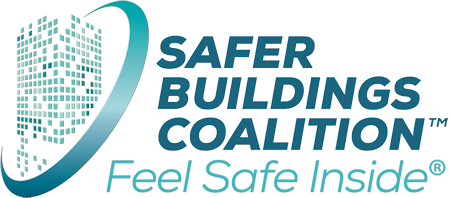|
The Big 5G's IWCE Public Safety Summit
Colorado Convention Center 700 14th St Denver, CO 80202 USA
Tuesday, May 07, 2019, 11:00 AM - 5:05 PM MDT
Category: Industry Event
Join North America's largest communications technology event and attend the IWCE Summit to learn about the latest critical communications innovations. Safer Buildings Coalition Managing Director John Foley will be among the speakers at the IWCE Summit at the BIG 5G Event at the Colorado Convention Center in Denver on 5/7. Don't miss this opportunity to learn valuable insights into critical comms tech. & explore how 5G will help w/comms issues in public safety. THE IWCE AGENDA 11:00 am – 11:05 am - Welcome: Stephanie McCall, Show Director, IWCE 11:05 am – 11:15 am - Chairperson’s Opening Remarks: Donny Jackson, Editor, IWCE’s Urgent Communications 11:15 am – 11:35 am - Keynote Presentation: Public Safety Needs 5G Connectivity 11:55 am – 12:45 pm - Keynote Panel Discussion: How Does 5G Change the Communications Equation for Public Safety? First responders are looking to benefit from 5G’s ultra-low latency, almost-unlimited bandwidth, IoT and the data that comes from it—all of which promise to help first responders have access to the real-time, situational-awareness information they’ve wanted for decades. One carrier already is asserting unprecedented reliability for 5G. Learn about the various flavors of 5G—standalone vs. non-standalone, as well as low-band, mid-band and millimeter-wave offerings—and how their differing characteristics can impact first responders’ ability to achieve the public-safety mission. 12:45 pm – 2:05 pm - Lunch Break & Networking 1:45 pm – 2:05 pm - Fireside Chat 2:05 pm – 2:35 pm - Presentation or Panel: 5G Devices: What Can I Buy—and When? Although 5G networks are being deployed today by carriers, the development of end-user devices that take full advantage of these systems are still in their infancy. Learn about fixed-wireless solutions, mobile-hotspot devices and a new generation of smart handheld devices with massive storage memory—when they will be available and information about characteristics important to public safety, such a battery life and hardening options. 2:35 pm – 3:10 pm - Panel: How Do I Get Ready for 5G? 5G’s characteristics sound promising for first responders, but what is the best path for public safety to take as it tries to get there? Learn how the evolution from 4G to 5G will differ significantly from previous generational transitions in the wireless industry, and what that will mean to public-safety agencies, in terms of short-term buying decisions and long-term strategies. Does subscribing to a carrier 5G service make the most sense, or are their circumstances in which a private system over CBRS or other spectrum would be a better choice? What steps can local governments take to ensure that their communities have the communications foundation needed to support 5G deployment? 3:10 pm – 3:50 pm - Coffee Break 3:50 pm – 4:10 pm - Presentation: Beyond Police, Fire and EMS: Internet of Things, Internet of Life– Saving Things and Smart Cities When responding to a large-scale incident, traditional first responders often need help from utilities, transportation and other government agencies to do their jobs efficiently. These “extended primary” groups also play vital roles in the development of smart-cities, smart-grid and autonomous-vehicle technologies that promise to impact public safety and the general public. 4:10 pm – 5:00 pm - Panel Discussion: Looking at the Big Picture: Realizing Synergies from Upcoming Public and Private Broadband Initiatives With so many connected projects coming to a city, how do you look at the technology holistically to bring the various agencies together in an area or region to functionally work in cooperation. Whether its FirstNet, smart buildings, IoT, smart grid, or NG911, many of the needed technology characteristics are similar. For instance, all need fast broadband, reliable connectivity, redundant operations and—increasingly—low latency. FirstNet’s nationwide network is a start, but connecting the United States really begins at a local level. Panelists will examine how to maximize efficiencies across agencies and jurisdictions in a manner that doesn’t result in unwanted duplicative efforts, while assessing which network assets could be shared and which should not. 5:00 pm - Chairperson’s Closing Remarks 5:05 pm - End of Conference |

 Prev Month
Prev Month View Month
View Month Search
Search Go to Month
Go to Month Next Month
Next Month Export Event
Export Event 